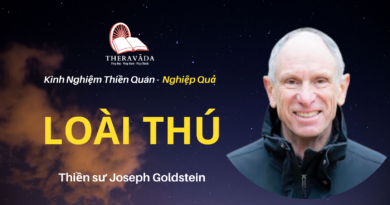BEGINNINGS: THE PALI SUTTAS – PART III: BEGINNINGS
BEGINNINGS: THE PALI SUTTAS – PART III: BEGINNINGS
The Pali Suttas have their beginning in the Deer Park at Sarnath, not far from Benares (present-day Varanasi), where the Buddha first taught to others that which he had himself already realized through proper attention and right effort. The five monks who heard that first discourse would have had to pay close attention in order for understanding to arise. Thus, when they were thereby led to see for themselves that which the Buddha had already seen — “whatever is of a nature to arise, all that is of a nature to cease” — they would not forget the words which had so stirred them. Having now overcome — at last! — that aversion to seeing as it actually is, rather than — mistakenly — as something else, what had always been there to be seen, they would naturally delight in those words which had led them to this release from the inner tension of that aversion and, delighting therein,[6] they would remember them well.[7] They might for their own pleasure call to mind what they had heard; they might for their mutual pleasure repeat it to each other[8] — as we ourselves might often recall and recount something which has given us delight — but they would not yet be doing so in order to instruct; for there was as yet but one teacher: the Buddha. All that was taught was what he taught; and there was therefore as yet no variance in the expression of that Teaching.
There came a time — probably a few weeks later — when as many as sixty, having been instructed, had come to full realization and now lived the holy life (brahmacariya) fulfilled as monks in the Buddha’s Order. It was at this time that the Buddha spoke his oft-quoted instructions:
“Monks, I am freed from all shackles, both heavenly and human. Monks, you too are freed from both heavenly and human shackles. Wander, monks, for the benefit, the happiness of the manyfolk, out of compassion for the world, for the welfare, the benefit, the happiness of royalty and men. Let not two go by one way. Teach the Teaching, monks, that in both word and spirit is wholesome in its beginning, wholesome its middle, wholesome in its conclusion. Proclaim a holy life that is utterly perfect and pure. There are beings with little dust in their eyes who, not hearing the Teaching, will be lost. But some will understand…”[9]
Thus the monks dispersed, to teach according to their individual abilities and proclivities.[10] At first they may have repeated, for the most part, what they remembered. Surely they would differ in what they recalled. Surely they would differ in what they chose to repeat. Here a discourse would be repeated only in summary; there it would be given in full; elsewhere it would be expanded and expounded upon. As the monks gained in communicative skills, as they learned to recognize which facets of the Teaching best suited various auditors, they would — at least some of them — have supplemented or supplanted the remembered words of the Buddha with their own descriptions of “the way things are”, and many discourses by disciples have been preserved for us. The insight would be the same, but the descriptions would differ, depending on both the occasion and the individuals.[11] And thus as the Teaching spread there would have been, unavoidably, a growing diversity in what was taught and remembered.
It could not have been long before there came to be monks in the Order who, though earnest, had not yet seen the Teaching for themselves. These would not have taken the same delight in the discourses as those whose insight had penetrated the Teaching thoroughly. Nor would they have had the same faculties for remembering them, for knowing the essentials, and for avoiding mis-remembering them. And hence there arose the need not only for listening but for learning. For unless the talks were memorized — in those days there was neither paper nor ink — those new monks might have, between themselves, exchanged naught but misconceptions and, in solitude foundered in confusion. Thus we find throughout the Suttas dozens of passages in which the need for learning, repeating and committing to memory is stressed and praise is given those with such learning, usually with the warning that mere learning, without application is inadequate.[12]
There were some who excelled at teaching, who were particularly inclined to do so, and who possessed those outward qualities which attract followings. Thus there arose large companies of monks each of which became separated from the others both by geography and by lifestyle. Some were forest dwellers, others lived near a town; some were sedentary, others roamed about; and so according to the preferences of each teacher, each company would have developed its own body of memorized discourses, with its own framework of summations and expansions, each group of teachings possessed of its own set phrases, conventions, and methods of exposition. Certain aspects of this variance and diversity would have been, among the as-yet-unenlightened, a source for confusion and disagreements. Indeed, some of these differences have been recorded. See, for example, the Bahuvedaniya Sutta, M. 59 (i,396-400) = S. XXXVI,19 (iv,223-28), wherein the Buddha settles a doctrinal dispute by explaining how it is that the various teachings he has set forth about feelings are, though different, not contradictory.
The Teaching was at this time established; it was well-remembered; it had spread. But it was as yet unco-ordinated, unstandardized; it was as yet not gathered together.









